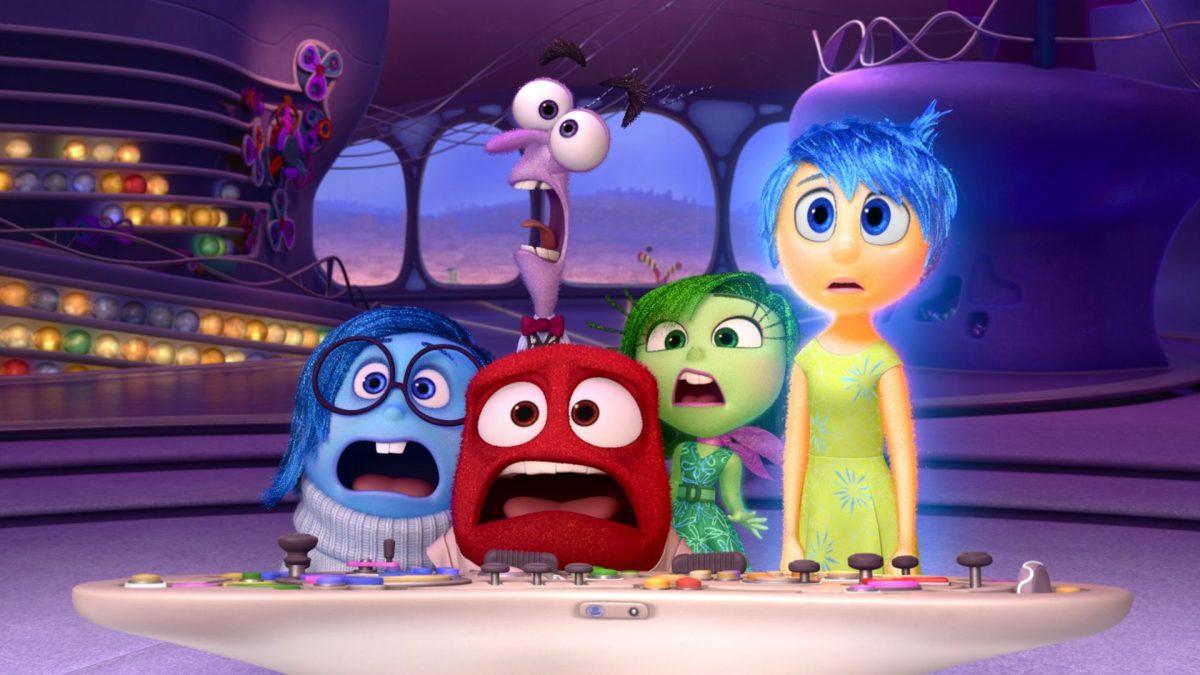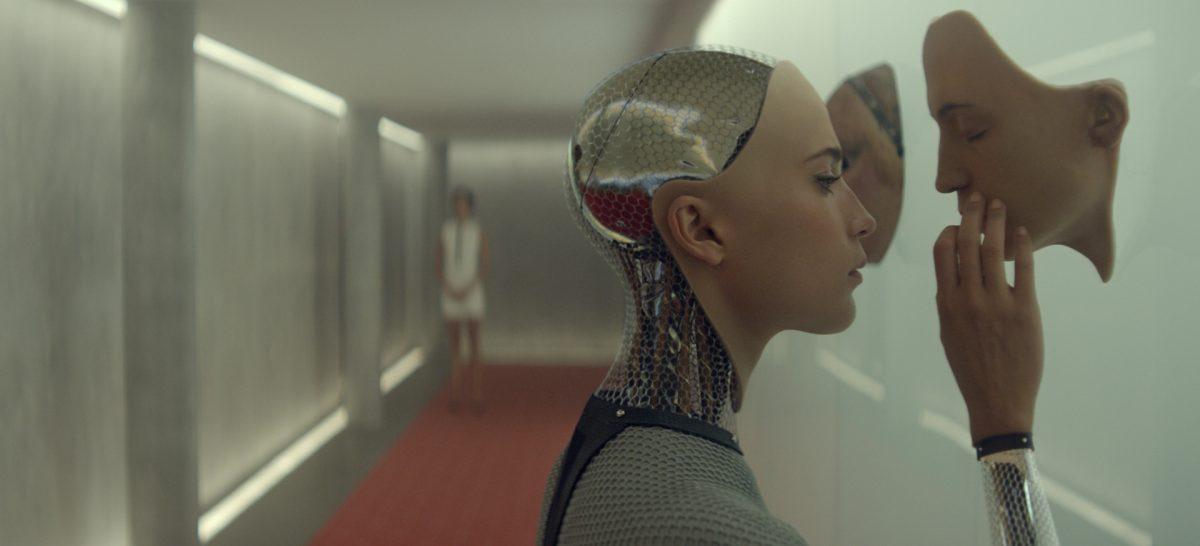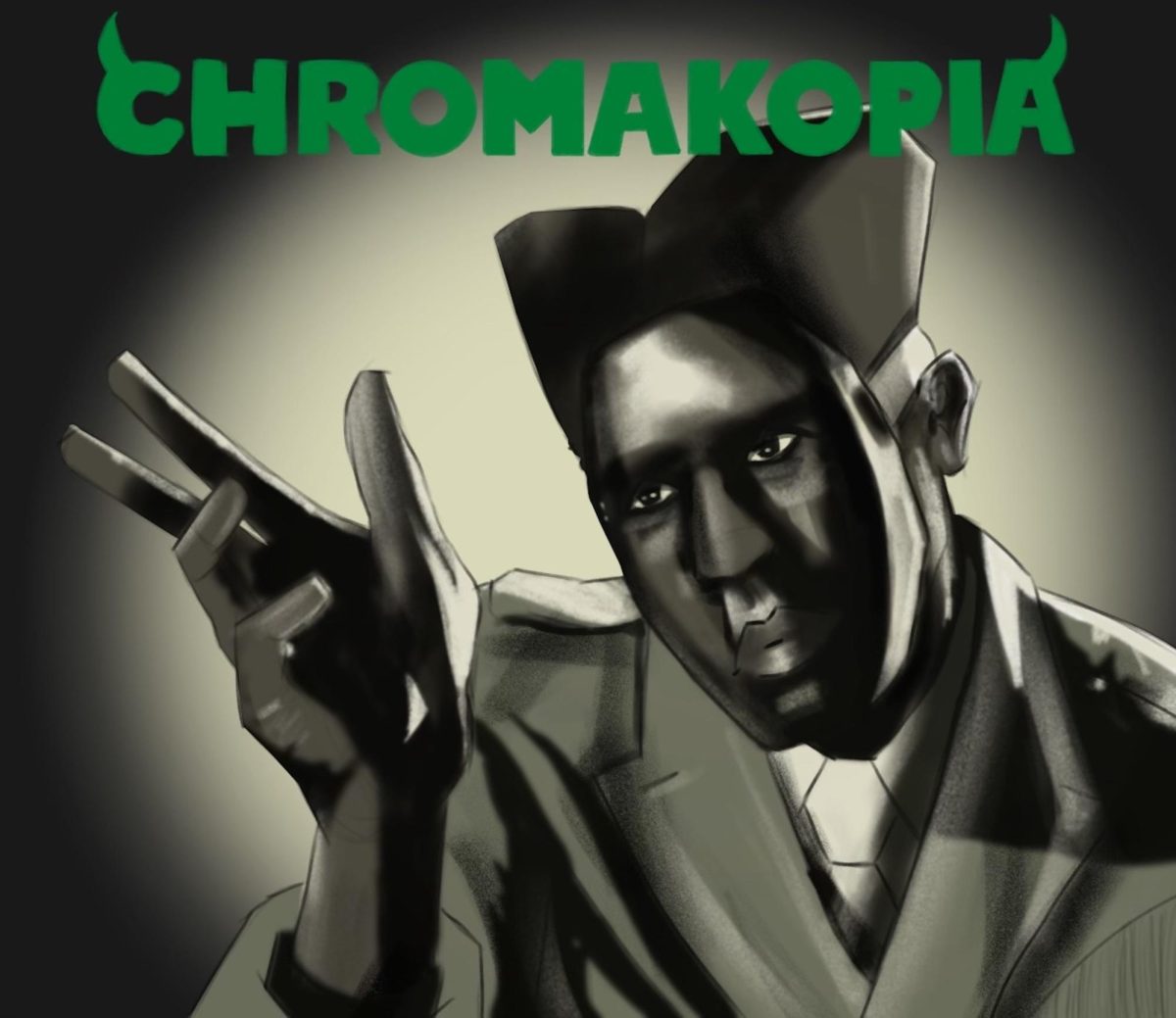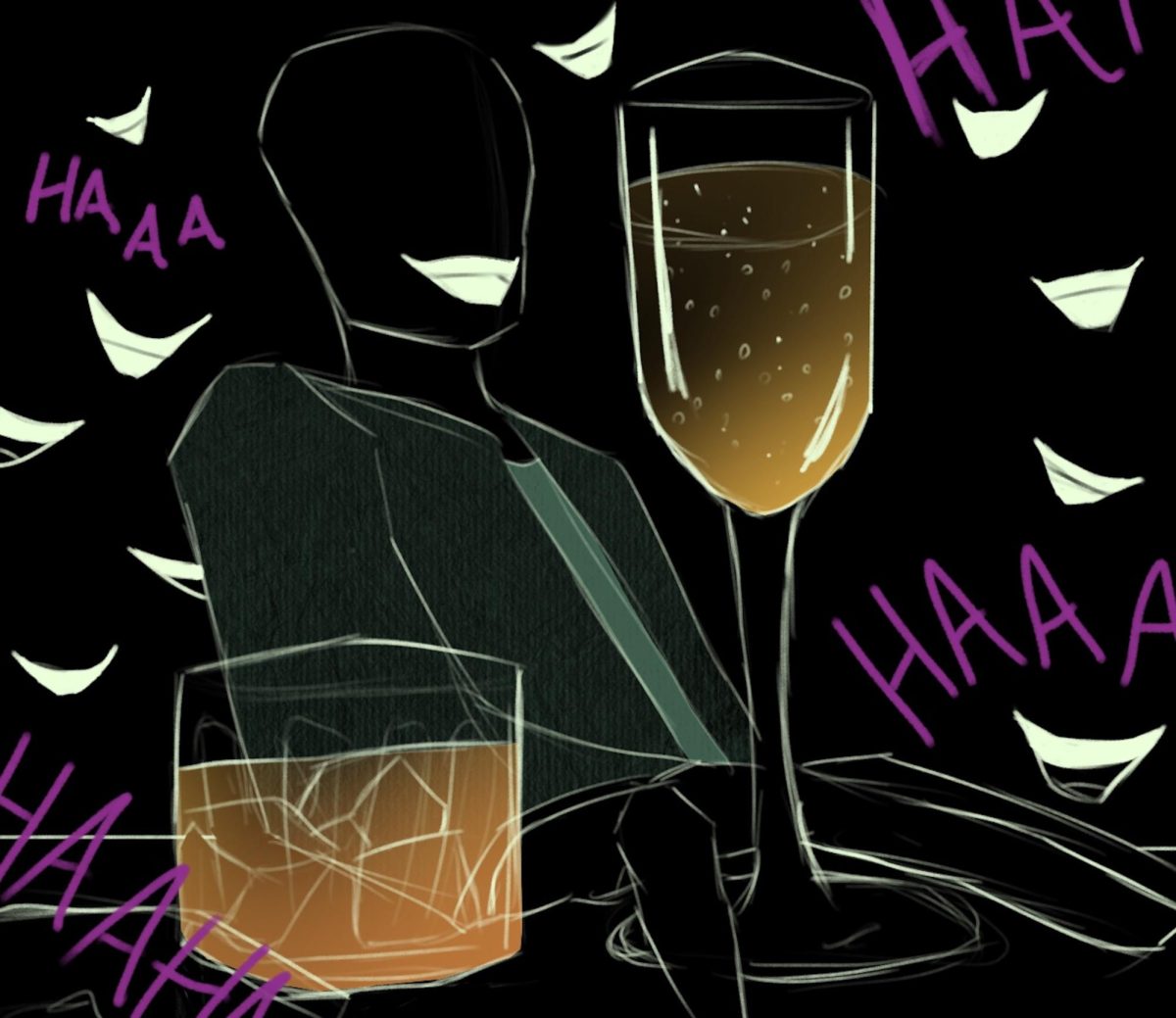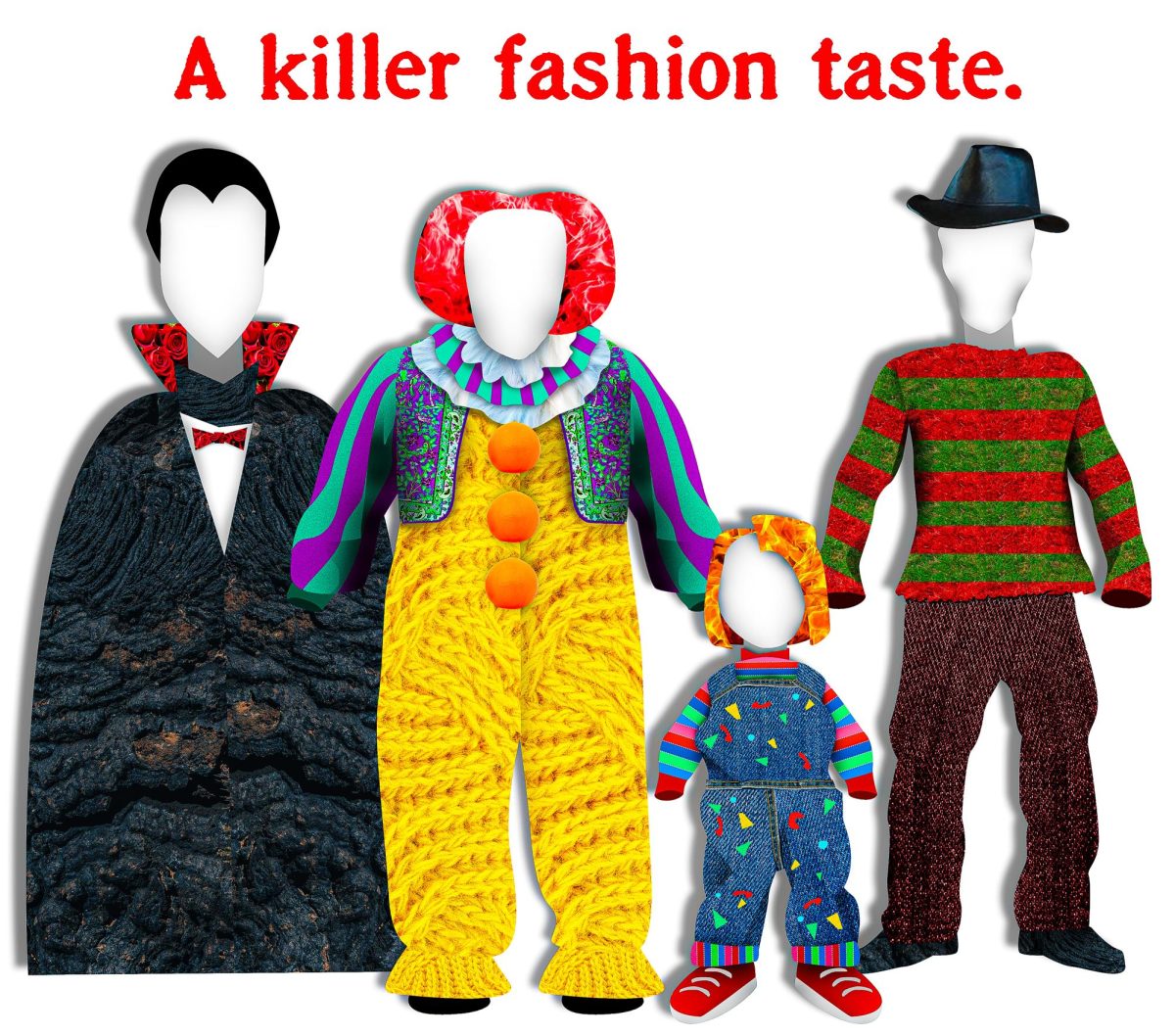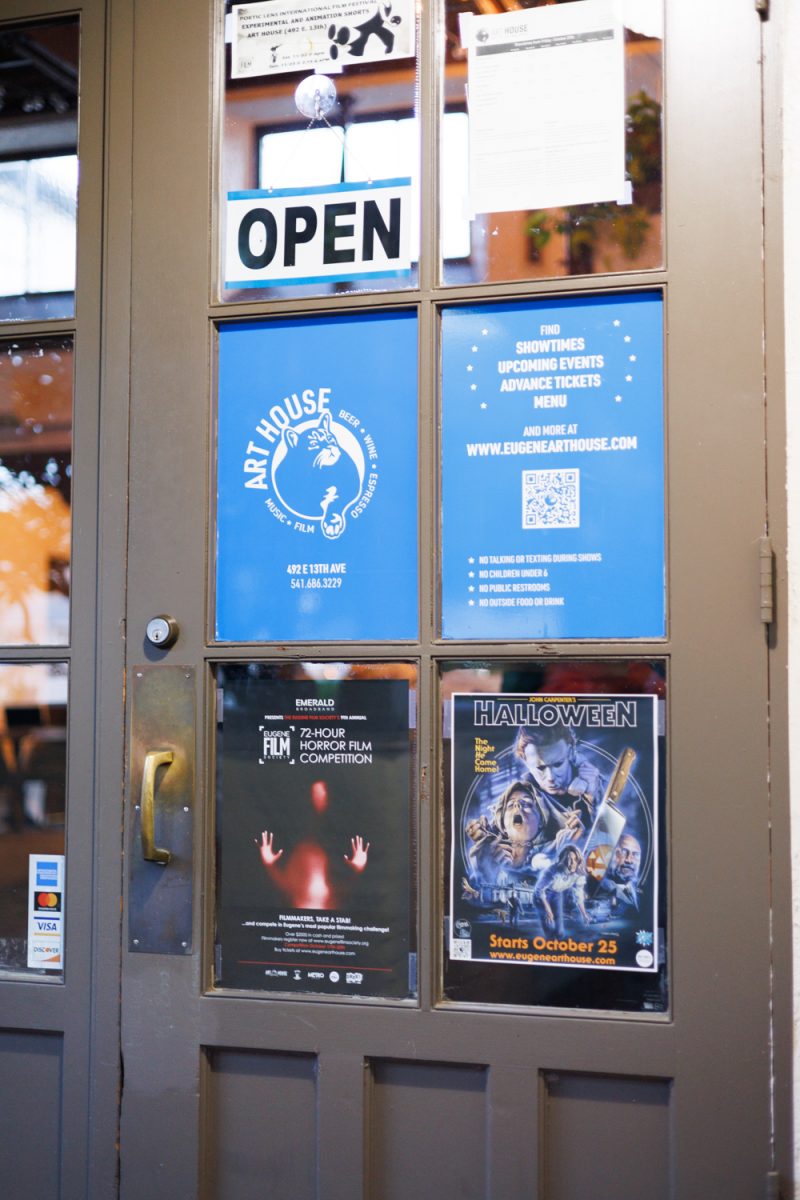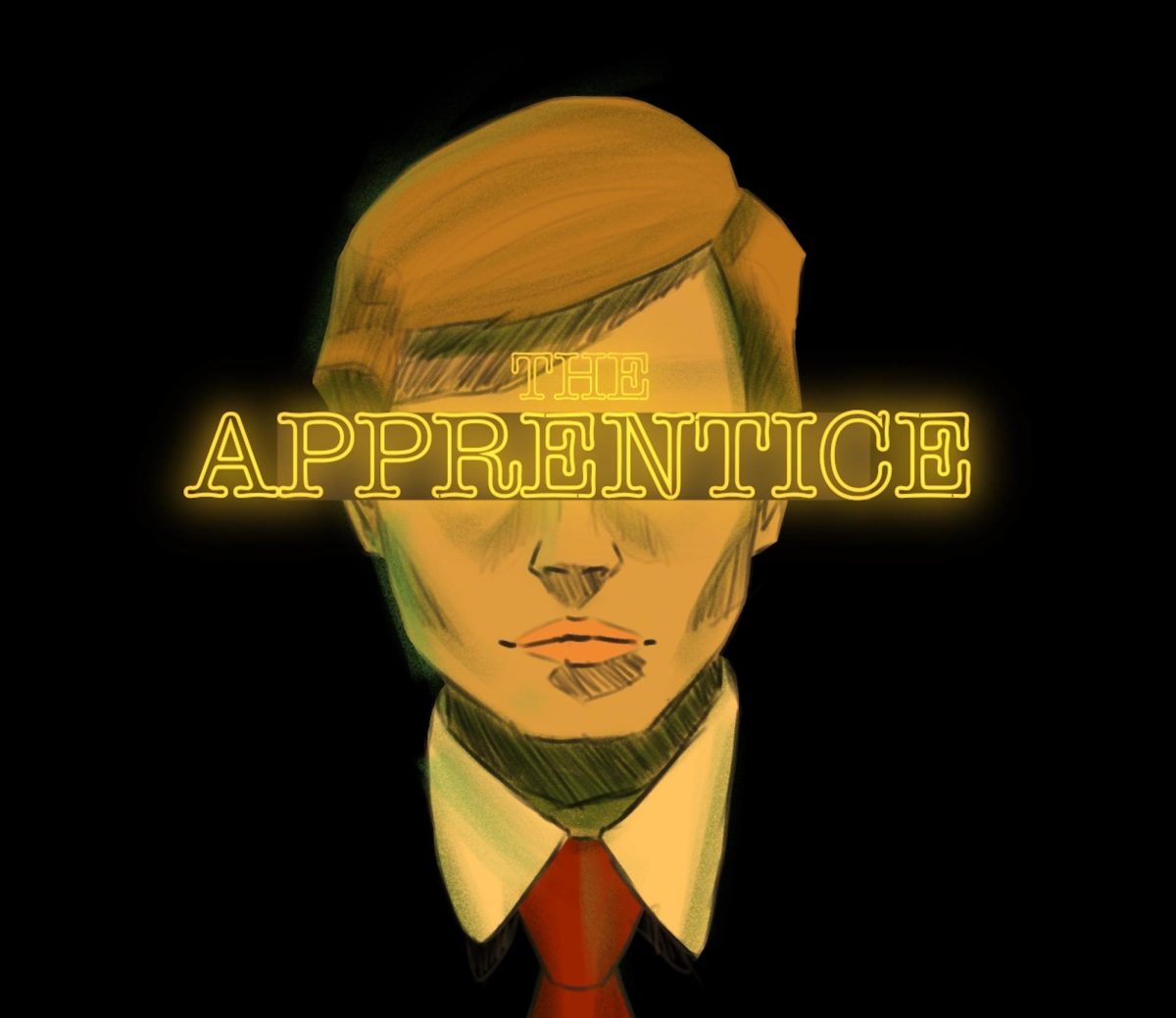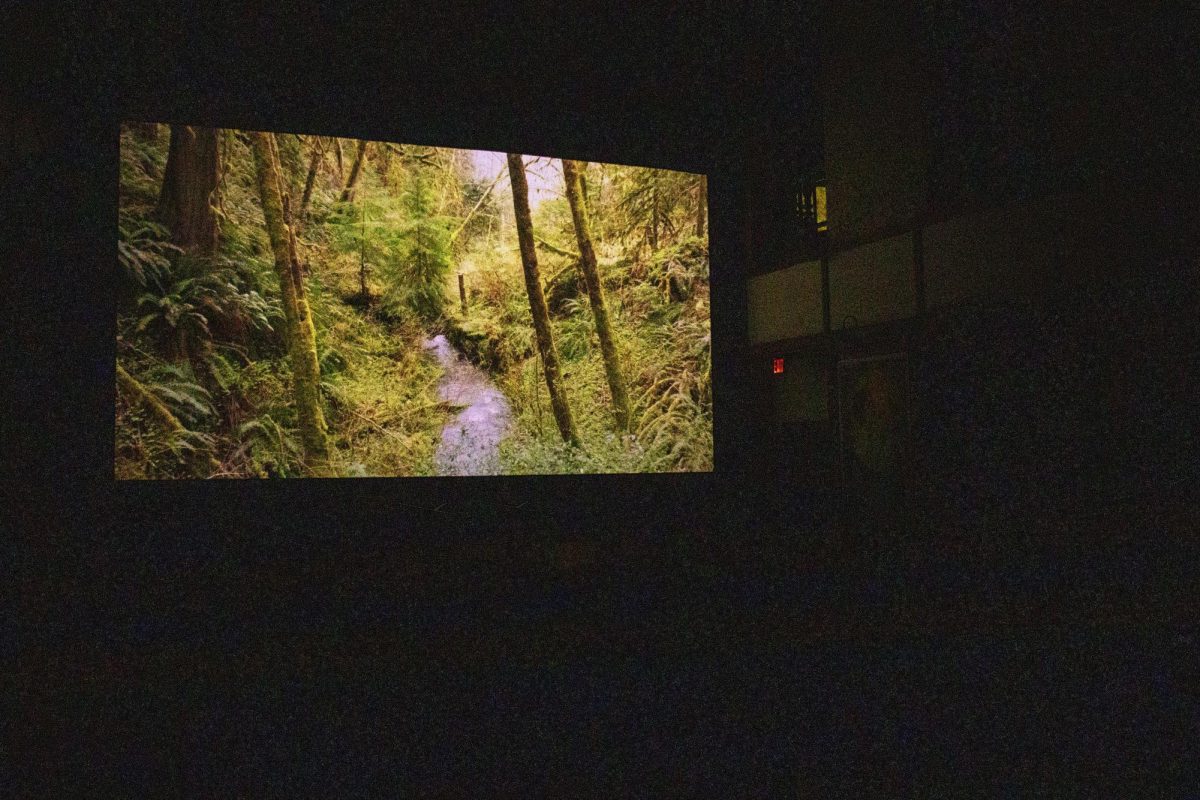2010 to 2015 has offered an elite variety of films. In the past six years, we’ve seen quite a range of cinematic storytelling: robots posing as humans; humans falling in love with robots; robots who are programmed to have human emotions; humans whose feelings control them like robots; robots pulverizing humans’ architecture; humans using robots to develop a system to communicate with other humans; human-robot hybrids fighting alien invaders; and humans telling other humans that robots are spying on them.
We’ve also seen some exceptional releases from some of the finest working directors today, like Terence Malick’s The Tree of Life; Kathryn Bigelow’s Zero Dark Thirty; Paul Thomas Anderson’s The Master and Inherent Vice; and David Fincher’s The Social Network.
Here are the Emerald’s picks of the best flicks from the decade so far (only some of which implicate robots):
Toy Story 3 (2010; Director: Lee Unkrich)
The implicit darkness of the Toy Story films is usually a vaguely disturbing undercurrent. Toy Story 3 brings that darkness to the fore, not for rote edginess but to emphasize the emotions of the human and toy characters alike. The climactic furnace scene is infamous for its ability to bring adults to tears. It’s obvious the toys will make it out of the flames alive and happy; not so with the tragic villain Lotso, whose horrifying fate doesn’t invoke poetic justice as much as just how awful life can be for toys. Few films go to the same length as Toy Story to create a terrifying world. Even more incredible given that it’s the third movie in a kids’ franchise. –Daniel Bromfield
Uncle Boonmee Who Can Recall His Past Lives (2010; Director: Apichatpong Weerasethakul)
In 2010’s Uncle Boonmee Who Can Recall His Past Lives, the often outrageous Thai director Apichatpong Weerasethakul mellows down to an almost obscene degree. Though the story centers on a dying man and his family, Uncle Boonmee is a surprisingly emotionally neutral experience. What makes it great is its ability to evoke awe in a way rivaled by few films, and it’s more conducive to repeat watching than 2001: A Space Odyssey, the gold standard for films designed to humble one through the vastness of space and time. Uncle Boonmee plays as an art film, but there are no philosophical conceits to grasp in order to enjoy it. Just sit back and watch. –Daniel Bromfield
Black Swan (2010; Director: Darren Aronofsky)
Known for his unnerving, surreal and downright depressing films (see: Requiem for a Dream and Pi), Aronofsky does not make feel-good flicks. His 2010 psychological thriller, Black Swan, definitely attests to that fact. Starring Natalie Portman and Mila Kunis, Black Swan follows Nina’s (Portman), journey to become the coveted white swan in an acclaimed ballet production of Swan Lake. As the pressure clamps down on Nina, she begins losing touch with reality, which Aronofsky showcases in utterly terrifying ways. The perspective sticks with Nina for the duration of the film, leaving the viewer just as in the dark as the confused and mentally unstable ballerina as she succumbs to hallucinations and makes life-altering decisions. Black Swan portrays the beauty of ballet and dance performance as well as the unbearable pressure that comes with it. Watch this film without cringing. I dare you. –Meerah Powell
The Social Network (2010; Director: David Fincher)
The Social Network is a film that will inevitably stand the test of time as the definitive period piece of the early 2000s. Fincher’s eye for bleak dread is turned away from the morbid, and focuses on a series of human interactions that would come to shape the internet era. Aaron Sorkin’s script crafts a Machiavellian villain out of Mark Zuckerberg, portrayed with damning humanity by Jesse Eisenberg. Startlingly entertaining, and endlessly watchable. –Chris Berg
Drive (2011; Director: Nicolas Winding Refn)
When Drive debuted in cinemas in 2011, it seemed to pass like a bullet in the wind. Refn’s stark thriller about a silent protagonist with a mysterious background went largely unnoticed by mainstream audiences, and Refn left it to the film blog circuit to champion its startling charms. Four years later, and Drive has seemingly established a new spin on noir, where rain and lounge jazz are traded for light-polluted nighttime skies and brooding electronic tones. –Chris Berg
Your Sister’s Sister (2011 TIFF release, 2012 actual release; Director: Lynn Shelton)
Shelton’s film is almost as simple as a story can be, with little more than a trio of actors and a remote setting. A woman, Iris (Emily Blunt) invites her friend Jack (Mark Duplass) to spend time alone at a remote cabin in the San Juan Islands, where he runs into her sister Hannah (Rosemarie DeWitt). With so few variables, Your Sister’s Sister defies its potential limitations with a poignant, comical story that becomes more captivating as cabin fever and the onus of keeping secrets in close-quarters start to set in. Also: Mike Birbiglia is in the first five minutes. –Emerson Malone
Midnight in Paris (2011; Director: Woody Allen)
Paris follows an ordinary man from Pasadena, Gil Pender (Owen Wilson) who’s fascinated by the ’20s and Paris in the rain, and finds himself transported to the middle of 20th century Paris. The movie is magically charming, filled with sweet humor and smart. It’s filled with famous historical figures like Pablo Picasso, Ernest Hemingway (Corey Stoll), Salvador Dalí (Adrien Brody), and F. Scott Fitzgerald (Tom Hiddleston), and displays their personalities on a level. The film also explores the concept of nostalgia, and how easy it is for one to wish they lived in another time. It illustrates the good and bad that comes with every era, entertaining audiences along the way. –Anna Lieberman
The Tree of Life (2011; Director: Terrence Malick)
Malick doesn’t just shoot for the moon with his partially autobiographical epic; he shoots for the center of the universe. He weaves together the universe’s origin, the beginnings of life on Earth and dinosaurs showing mercy for one another, with his trials growing up in Waco, Texas in the ’50s with a strict dad (one played by Brad Pitt, no less) and an angelic mom (Jessica Chastain, naturally) in this maximalist story. You can easily get intoxicated by watching the sweeping, poetic cinematography of Emmanuel Lubezki, through which we see the world from a youthful perspective. –Emerson Malone
The Avengers (2012; Director: Joss Whedon)
In 2008, the stumbling house of Stan Lee set out to release its first in-house produced film under the Marvel Studios banner. Iron Man was a bold film with a closing sequence teasing something seemingly impossible: The Avengers. When it came time for Marvel to deliver in the face of industry shifting success, they gave us its crown jewel. This is the perfect summer film, a spectacle event that brings together iconic characters with purpose and charm. It displays an understanding of what a Marvel blockbuster can give to an audience, and never holds back. – Chris Berg
Life of Pi.
Life of Pi (2012; Director: Ang Lee)
This movie is filled with a magical-realism that made people come together in theaters and perk up, wide-eyed at the beautiful cinematography, and fall into Pi’s world lost at sea on a tiny lifeboat with a tiger; his last remaining reminder of his life before his ocean-exile. Filled with moments of devastatingly raw sadness, uplifting triumph and quiet hopelessness, this movie left people riveted and connected to Pi and his tiger – Richard Parker – and the bond they create together alone for so many days on that boat surviving, simultaneously finding themselves in the center of God’s wonders. – Jordyn Brown
The Place Beyond the Pines (2012; Director: Derek Cianfrance)
All you need to know: Ryan Gosling plays a carnival motorcyclist stunt driver who begins to rob banks to provide for a newborn child that he just learned he has with his lover (Eva Mendes). Pines is a beautiful exercise in storytelling, both in the jarring, segmented structure and in its depiction of the cyclical, inescapable patterns that befall some father-son relationships. –Emerson Malone
Spring Breakers (2012; Director: Harmony Korine)
Harmony Korine’s first “mainstream” film portrays the turn-of-the-2010s as an era. The Black Keys and Britney Spears, Gucci Mane and My Little Pony – all are portrayed as relics of a very specific moment in time. But Korine doesn’t court the pang of relatability the way Richard Linklater did in Boyhood. The film looks and feels like chillwave, EDM and Instagram filters. It exists entirely in a sphere that, five years after “Scary Monsters and Nice Sprites,” this generation might even feel a bit nostalgic for. But the most remarkable thing about Spring Breakers is that (relatively venerable) director Harmony Korine isn’t condemning millennials. He doesn’t shame them for texting, partying, having promiscuous sex, or listening to Skrillex. He simply turns a thoughtful eye on a culture obsessed with instant gratification. –Daniel Bromfield
The Wolf Of Wall Street (2013; Director: Martin Scorsese)
It’s hard not to feel morally iffy about Scorsese’s escapist epic, especially when it makes the high life its corrupt protagonist Jordan Belfort enjoys seem so fun – sex, drugs, luxury vehicles, near-constant partying, all at an enviably young age. But the conspicuous absence of the moral implications of his extravagant lifestyle just makes them more obvious and uncomfortable. We admire him as perversely as the audience that gazes at him at the end of the film as he delivers his post-prison seminars. And when his true evil comes out, as during an immensely uncomfortable scene with his gay butler, the shattering of the illusion is even more sobering. –Daniel Bromfield
The Master (2012; Director: Paul Thomas Anderson)
Some praised this movie for being a big, juicy hunk of steak to savor for a long time, while others called it the cinematic equivalent of a pile of bricks without mortar. In a premise that could have arisen from a J.D. Salinger novella, we follow Freddie Quell (Joaquin Phoenix) a WWII veteran with a canine charisma, prone to concocting booze from paint thinner. He finds his way onto a ship one night, where he forges a kinship with Lancaster Dodd (Philip Seymour Hoffman), the figurehead of a quasi-religious following. Fueled by its ambiguous title, the film delves into the power dynamic between the unlikely companionship between the two. Partly inspired by the lives of John Steinbeck and L. Ron Hubbard, The Master is not a film to be left in the background. It demands attention. –Emerson Malone
Her (2013; Director: Spike Jonze)
Theodore Twombly (Joaquin Phoenix) is the solitary protagonist in this meditation on hyper-futuristic alienation, who falls in love with a phone operating system named Samantha (voiced by Scarlett Johansson). You’d think a premise with this much cross-platform romance would be a painfully cheesy tale, but it plays off effortlessly, and almost disturbingly so. If for no other reason to watch Her, listen for Arcade Fire’s soporific, instrumental score. –Emerson Malone
This Is The End (2013; Directors: Evan Goldberg and Seth Rogen)
There are few great disgustingly raunchy comedies. This Is The End is one of the raunchiest films of all time and the funniest movie of the decade. It boldly goes where no other film dares tread. In it, Seth Rogen, Jay Baruchel, Jonah Hill, Craig Robinson and Danny McBride struggle to survive after the apocalypse strikes during an A-list celebrity party at James Franco’s posh new house. The actors all play and mercilessly mock themselves in a manner that is as self-deprecatory as it is celebratory, leading to an endlessly quotable film. Few movies can justify being anywhere near as crude as this, but This Is The End hilariously crosses the line of cultural acceptability for an unforgettably funny film involving Channing Tatum as Danny McBride’s sex slave, a nighttime visit by Satan (played by Rogen) to Jonah Hill’s room and a curt rave prominently featuring Psy’s “Gangnam Style.” —Craig Wright
Force Majeure. Photo credit: Creative Commons.
Force Majeure (2013; Director: Ruben Östlund)
A “controlled avalanche” is key to this Swedish black comedy and a rather fine metaphor for the repressed catastrophe that befalls a family at a ski resort. When an avalanche interrupts lunch, the dad makes the snap judgment to run away from his wife and children out of self-interest for his safety, and shamefully pays the price for his decision. The whole family dynamic is rattled; the ski trip is effectively corrupted. The lingering, Kubrickian cinematography holds a microfocus on the family, even as you catch glimpses of an oddly futuristic world around them. Humiliation and emasculation are abundant as the perception of the stoic patriarch is put on trial. Force Majeure is damn stressful to watch, but it’s a near-perfect film. –Emerson Malone
Godzilla (2014; Director: Gareth Edwards)
Studio blockbusters are rarely the place you expect to see restraint on film. Much less so in a tentpole monster movie about the most legendary kaiju of them all. But Gareth Edwards’ Godzilla illustrates an amazing commitment to pace and building scale – all without a slow moment. Using some of the most vibrant cinematography in recent memory, Edwards transitions from a personal human tragedy, to community and city destructions, to a gritty bar fight between skyscraper-sized beasts. –Chris Berg
The Raid 2 (2014; Director: Gareth Evans)
It’s common parlance for film snobs of the day to insist that the traditional action movie is dead. That the dawn of PG-13 blockbusters and shakey camerawork has slit the throat of a cinema staple. But all these fools would need is a glimpse at The Raid 2 to see their folly. This Indonesian action epic is a masterpeice of classic hand-to-hand combat choreography, gunplay, car chases, and sweeping brawls that feel painfully personal. –Chris Berg
The Grand Budapest Hotel. Photo credit: Creative Commons
The Grand Budapest Hotel (2014; Director: Wes Anderson)
This film retains all the commonplace characteristics of a Wes Anderson production – the pop-up sets, an antiseptically clean look, stilted rapport, and Bill Murray. But Anderson’s eighth film still shows how, despite some degree of predictability, he can still bend the rules. He employs different aspect ratios to correspond to three separate timelines and effortlessly blends together a number of genres – art heist, youths in love, and a prison break – within 99 interminable minutes. –Emerson Malone
It Follows (2014 Cannes release, 2015 actual release; Director: David Robert Mitchell)
It Follows is a pastiche of ’70s horror, stealing a classroom scene outright from Halloween and featuring a synth score whose debt to John Carpenter is almost comical. But It Follows features smarter, more compelling characters than the wooden, one-dimensional idiots of its source material. It also features one of the most effective ghosts in cinema history (its true nature isn’t identified, but it’s treated like a ghost, and it even wears a white sheet at one point.) Its appearance is unimpressive, but its mere presence is far more frightening than any amount of dumb zombie makeup could ever be. –Daniel Bromfield
It Follows (again)
As a long time fan of horror I am surprised when something genuinely scares me. David Robert Mitchell’s It Follows did just that, with ease. Though at its base, a supernatural flick about a woman fleeing a mysterious, shape-shifting entity, It Follows is more than just simple scares. Though undoubtedly terrifying, the film also focuses on the themes of friendship and trust and specifically what great lengths friends are willing to go to protect each other. It Follows is built on a very specific, timeless, eerie yet beautiful atmosphere with the framing of each scene so well thought out that they could stand on their own as pieces of art. The dreamy, minimalistic cinematography, amplified by an impeccable soundtrack written by Disasterpeace, will easily send chills up spines. Extremely uncomfortable to watch at times and breathtakingly gorgeous at others, It Follows will linger with you long after the credits roll. –Meerah Powell
Citizenfour (2014; Director: Laura Poitras)
The most surprising revelation from the Snowden leaks? That they had a documentary filmmaker with them the whole time. While holed up in a Hong Kong hotel, Poitras records the potent anxiety and boundless paranoia of Guardian journalist Glenn Greenwald and the recently unemployed Edward Snowden as the most important news story of the 21st century breaks. That’s what makes this a unique documentary of its kind, given that it’s not a retrospective portrayal, but a firsthand account of history in the making. –Emerson Malone
Going Clear: Scientology and the Prison of Belief (2015; Director: Alex Gibney)
Through interviews with The Church of Scientology’s apostates, Gibney’s adaptation of Lawrence Wright’s book “Going Clear” is a deconstruction of one of the most enigmatic, made-in-America organizations. It attempts to explain as much as it can within two hours – the life of founder L. Ron Hubbard, the religion’s inventive vocabulary and the Church’s current figurehead; David Miscavige and the numerous allegations of his violent behavior; as well as why the Church courts celebrities as members; and how it achieved the tax-exempt designation as a religious institution. This is likely the most compelling documentary – if not feature-length film – of 2015. –Emerson Malone
Inside Out (2015; Directors: Pete Docter, Ronnie Del Carmen)
Although Inside Out is a film geared toward children, it represents fairly mature ideas about the nuances of emotion, even exploring the consequences of not feeling anything at all.
The film follows Riley, a funny and kind girl that moves to San Francisco with her parents. And of course, all of her emotions come with her. The human mind’s varied moods are on full display here – Fear, Disgust, Anger, Sadness, and Joy – all represented in a sweet, anthropomorphized form. The film is extremely creative, representing complex psychological concepts in an entertaining fashion. Riley’s brain is like its own world, with islands of emotion, a train of thought and endless shelves of stored memories. Mark this as the first children’s film that explicitly states how joy is comforting, but also that it’s okay to be sad sometimes. –Anna Lieberman
Ex Machina (2015; Director: Alex Garland)
Set in the not-so-distant future, Ex Machina, directed by Alex Garland – writer of 28 Days Later – is a film that proves to be way too close to home. The film focuses on a computer programmer named Caleb (Domhnall Gleeson) who wins a workplace contest to be part of a top secret, once-in-a-lifetime assignment. It’s soon revealed – after he already signed multiple contracts and agreed to be locked up in a remote fortress-esque mansion in the wilderness for a week – that Caleb will be administering a test to an android in order to gauge its potential artificial intelligence. The film uses brilliant pacing broken up with scenes of stunning views of Norway, for use of both beautiful cinematography and as an addition to the cold, creepy setting. It adds a chilling, sterile environment to the intense interactions between Caleb, his boss (played by Oscar Isaac) and a humanoid robot, Ava. Ex Machina holds the sentiment of mystery close, as both Caleb and the viewer seem unsure of whom to trust throughout this chilling film. You may want to toss your laptop out the window after this one. –Meerah Powell
Not listed: Shut Up and Play the Hits (2012); Sound of My Voice (2011); Boyhood (2014); Django Unchained (2012); Dear White People (2014); Gravity (2013); 127 Hours (2010); Steve Jobs (2015); Carnage (2011); Birdman (2014); Holy Motors (2012); Zero Dark Thirty (2012); Biutiful (2010); The American (2010); The Skin I Live In (2011); Moneyball (2011); Beasts of the Southern Wild (2012); Seven Psychopaths (2012); How To Survive a Plague (2012); Blue Jasmine (2013); Dallas Buyers Club (2013); The Imitation Game (2014); Nightcrawler (2014); Inherent Vice (2014); The East (2013); Another Earth (2011); I Origins (2014); Gone Girl (2014); Whiplash (2014).
Follow Daniel Bromfield on Twitter @bromf3
Follow Emerson Malone on Twitter @balldroid69
Follow Chris Berg on Twitter @Mushroomer25
Follow Meerah Powell on Twitter @meerahpowell
Follow Craig Wright on Twitter @wgwcraig
Follow Jordyn Brown on Twitter @thejordynbrown
Ex Machina Photo credit: Creative Commons

